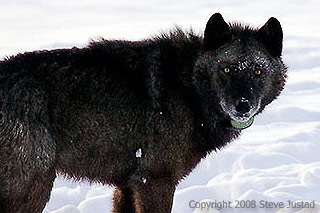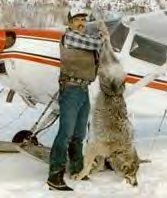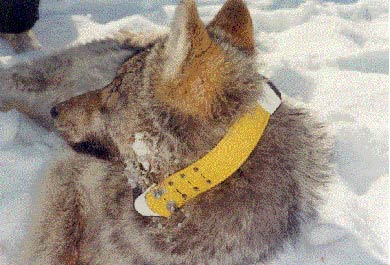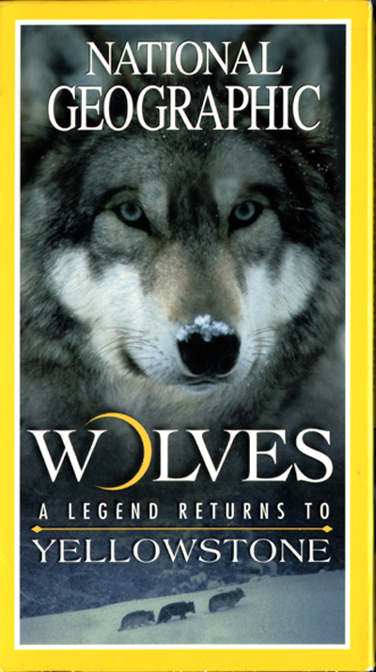Limpy – Wolf 253/Steve Justad
March 16, 2015
On March 28, 2008, almost seven years ago, a cherished Druid Peak pack wolf, nick-named Limpy, was shot dead outside Daniel,Wyoming. It happened on the day wolves, in the Northern Rockies, lost their ESA protections for the first time by the then Bush Administration.
“He died for nothing” said Lake City resident Marlene Foard. A senseless death for a beloved wolf.
RIP Limpy – we remember and miss you!
Here is Limpy’s story told by the Trib.com.
===
The life and death of wolf 253
Posted: Sunday, April 13, 2008 12:00 am Trib.com
FRANZ CAMENZIND
A wolf died the other day in Wyoming. Along with three others, it was shot and killed on the first day that wolves in most of the state lost the protection of the Endangered Species Act. These were legal kills made by people simply because they could. Nothing more was required of them but to report the kills to state officials – no license, no fees, no restrictions.
For sportsmen, one of the proudly held rules is: “Know Your Target.” What did these hunters know about their targets?
One of the four dead wolves was a female that may have been pregnant. Two of the males were unknown and will be remembered simply as body count numbers in the West’s war on wolves. But one wolf has a history known to many throughout the region. To some he was “Limpy,” to others he was “The Wanderer.” Officially, he was 253M, the 253rd wolf to be radio-collared in the Greater Yellowstone area since wolves were reintroduced in the mid-90s.
253M was born in April 2000 into the Druid Peak Pack, whose territory encompasses Yellowstone National Park’s Lamar Valley. His father was likely 21M, a leader of renown and a story unto himself. 21M was one of the first generation of wolves born in Yellowstone in more than 60 years.
253M was black, as are nearly half of Yellowstone’s wolves. Before he was two, he was injured defending his territory from intruders from a nearby pack. Although the Druids held their territory, 253M’s left hind leg was injured, causing a life-long limp distinguishing him from other wolves.
In the fall of 2002, he left his home territory, typical behavior for wolves of that age. Later that fall, on Nov. 30, 253M was accidentally caught in a trap set for coyotes about 20 miles northeast of Salt Lake City, making him the first confirmed wolf in Utah in more than 70 years. Tracks around the site suggested that he was traveling with another wolf – perhaps they were a pair exploring for a place to begin a new life.
253M was taken back to Wyoming and released three days later by a federal biologist south of Yellowstone Park. He made his way back to the Druid Pack before Christmas, surprising the “experts,” who thought he would immediately head back south.
This second time around, he remained with the Druids for nearly two years and rose to the level of second-ranking male – subordinate only to the now-famous, but aging, 21M. In the summer of 2004, 21M died, and most observers thought that 253M would take over as leader of the Druids. But again, he managed to fool the experts and waged only a minor battle with “New Black,” as the victor and new Druid leader came to be known.
Immediately after New Black assumed his alpha status, 253M broke from the pack and began wandering about Yellowstone, mostly undetected, only to unexpectedly appear on the National Elk Refuge in Jackson Hole – 90 miles south of his birthplace – alone, but looking healthy.
It was in early 2005 that 253M may have fathered his only offspring. He was observed with another male and female, and 5 pups, forming the new Flat Creek Pack. But within a year, 253M again headed south, and the Flat Creek Pack dissolved. The cause of the sudden disintegration of this new pack will never be known. Was 253M simply living up to one of his names, The Wanderer?
Meanwhile, the Daniel Pack, which roamed across a mix of ranching and wild lands 60 miles southeast of Jackson, was implicated in cattle depredations and thus under constant surveillance and control. Sometime in the next year or so, 253M found his way into this persecuted pack.
During his eight years of travel across thousands of miles and at least two states, 253M was never accused of any destruction of human property. He was a “good wolf” – one who adapted to his human-dominated world. The kind of wolf we should be able to live with.
But on the morning of March 28, his luck ran out. Not because of anything he did, but because of what a minority of people in Wyoming wanted – to take all protection off wolves in 88 percent of the state, where anyone can now kill any wolf by any means at any time. 253M and three others were killed for nothing more than being wolves in Wyoming’s politically designated predator zone.
253M and other wolves are now dead in Wyoming because some don’t want wolves in the Equality State.
Now we “Know The Target.” What have we learned?
Franz Camenzind is executive director of the Jackson Hole Conservation Alliance.
http://trib.com/editorial/forum/article_124999b7-cf79-5ce6-bb05-48213d55554b.html
===
Click the video to watch on YouTube
August 16, 2011
This video is a treasure I found by chance, a beautiful narration by Brian Connolly of the life and death of wolf 253M. It is so moving you will be brought to tears.
Limpy was the inspiration for this blog. He was the perfect wolf in my mind’s eye, a member of the iconic Druid Peak Pack, who once ruled Yellowstone’s Lamar Valley.
Brian, I don’t know you but thanks for your beautiful ode to Limpy, who gave pleasure to so many. A wolf, who over came the adversity of injury but was killed for nothing in the name of blood sport.
Rest in peace dear, dear wolf 253M
For the wolves, For Limpy,
Nabeki
Howling For Justice is dedicated to wolf 253.
===
Beloved ‘Wolf 253′ killed in Wyoming
April 2, 2008
John Hollenhorst reporting
One of the nation’s most famous and beloved wolves has been killed. Someone in Wyoming shot him, along with two other wolves, apparently the very day the Bush Administration lifted legal protections.
READ MORE:
http://www.ksl.com/?nid=148&sid=2994073
===
Top Photos: Courtesy Steve Justad
Bottom Photo: Courtesy KSLdotcomUtah
Video: Courtesy YouTube Brian Connolly
Posted in: wolf 253, Endangered Species Act, Wolf wars
Tags: Endangered Species Act, wolf intolerance, blood lust, Limpy, Wolf 253, Druid Peak Pack, RIP Limpy, KSLdotcomUtah, Brian Connolly, Trib.com





























 Boulder White Clouds Council
Boulder White Clouds Council Exposing The Big Game
Exposing The Big Game Footloose Montana
Footloose Montana Friends of the Clearwater
Friends of the Clearwater Lockwood Animal Rescue Center
Lockwood Animal Rescue Center Louise du Toit
Louise du Toit LUPUSLAETUS
LUPUSLAETUS Mercy For Animals
Mercy For Animals Northern Idaho Wolf Alliance (NIWA)
Northern Idaho Wolf Alliance (NIWA) Predator Friendly®- Because Wildlife Matters
Predator Friendly®- Because Wildlife Matters Project Coyote
Project Coyote Project: Wolf
Project: Wolf The Nature Conservancy
The Nature Conservancy The Ravensong Group
The Ravensong Group WildEarth Guardians
WildEarth Guardians Wisconsin Wildlife Ethic-Vote Our Wildlife
Wisconsin Wildlife Ethic-Vote Our Wildlife Wolf And Wildlife Studies: Jay Mallonee (Independent Wolf Biologist)
Wolf And Wildlife Studies: Jay Mallonee (Independent Wolf Biologist) Wolf Song of Alaska
Wolf Song of Alaska Wolves in english ! Les loups en anglais !
Wolves in english ! Les loups en anglais ! WWP's Gray Wolf Page
WWP's Gray Wolf Page Yellowstone To Yukon Conservation Initiative
Yellowstone To Yukon Conservation Initiative